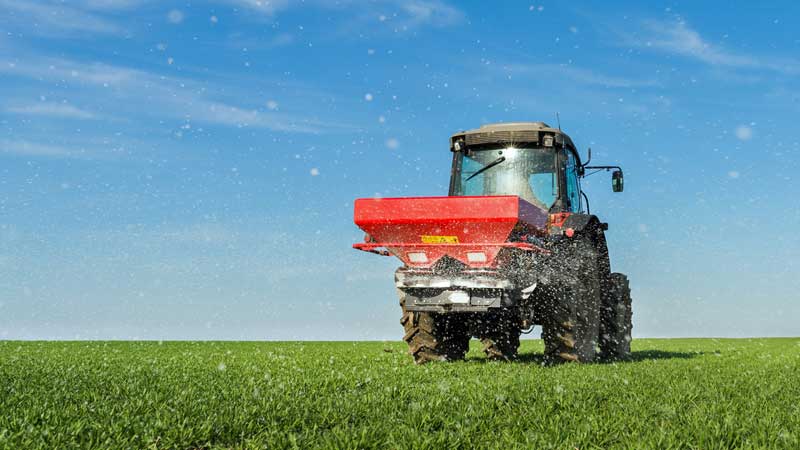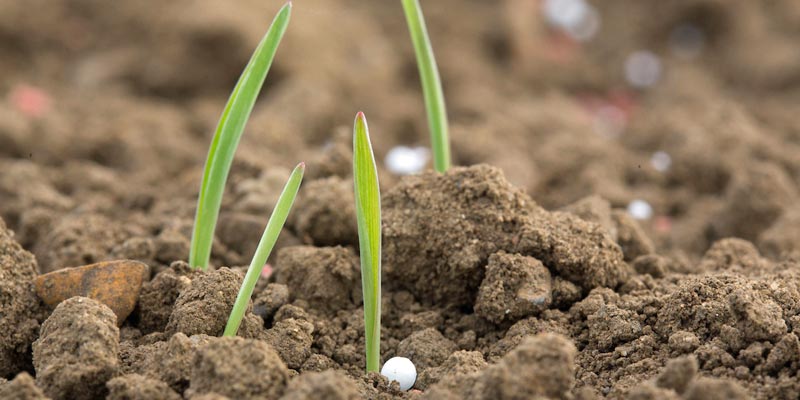What is fertiliser?

Plants, just like humans, need food to live. For plants, food is called fertiliser which can come from many sources including animals (e.g. manure), vegetables (e.g. compost) and minerals.
Regardless of its source, fertiliser enables plants to achieve their full potential; without adequate fertiliser, crop yield or quality will be reduced. This may mean a lower yield or fewer flowers. Unlike humans, plants cannot overeat.
For most plants, the basic source of fertiliser is already in the soil. However, this is often insufficient for the plant to achieve its potential. So fertilisers, which may be applied to soil or foliage, ensure adequate supplies of nutrients are available for growing crops.
Fertilisers may also ‘top up’ soil reserves which can be reduced as nutrients are removed in harvested crops or through natural loss to the environment.
What are plant nutrients?
Plant scientists have identified 17 elements as essential to growth, health and nutritious food production.
Some, known as micro-nutrients, are required in very small amounts; others (macronutrients) are required in larger amounts, plants require essential nutrients (macro and micronutrients) in sufficient quantities.

Nature provides three essential elements: carbon, hydrogen and oxygen from air and water.
The major macronutrients are:
- Nitrogen (N): Promotes leaf growth
- Phosphorus (P): Development of roots, flowers, seeds, fruit
- Potassium (K): Strong stem growth, water movement within plants, promotion of flowering and fruiting
‘Secondary’ macronutrients are: Sulphur (S), Magnesium (Mg) and Calcium (Ca); whilst micronutrients are: iron (Fe), manganese (Mn), zinc (Zn), copper (Cu), boron (B), molybdenum (Mo), chlorine (Cl), nickel (Ni).
Furthermore, additional elements may be essential to a few plant species, e.g. sodium (Na) and cobalt (Co).
Insufficient supply of just one essential plant nutrient can affect plant growth and thus yield.
Micronutrient fertilisation can extend the lifecycle of food, improve the post-harvest quality and thus reduce food waste.
Calcium-based and boron-supplemented fertilisers help strengthen plant cells for increased resilience post-harvest.
Types of fertilisers
Mineral fertilisers
The fertiliser industry produces a wide range of crop nutrients that may be mined minerals or manufactured fertilisers.
Products may supply one or several essential mineral nutrients. Each product has advantages and shortcomings, depending on where they are used and economic factors.
Livestock manure
Livestock manure is a valuable nutrient source, but its nutrient content varies widely depending on livestock type and farm management practices. Before application, manure nutrient content should be analysed.
Crop residues
Crop residues (such as leaves, stems and roots left in or on soil) release nutrients as they break down. Crop residues vary greatly in nutrient content.
Compost
Compost (organic matter that has been decomposed) can be added to soils to supply nutrients and serve as soil conditioner. Quality of composts can vary depending on type of raw materials and processing methods.
Biological N fixation
Biological N fixation (BNF) - the conversion of inert atmospheric dinitrogen (N2) molecules into N that plants can use.
Leguminous crops (e.g. beans, peas, alfalfa) host bacteria on the roots that can fix from 20 to 400 kg N/ha/year depending on plant species, growing season length and climatic conditions.
Previous applications
Soil nutrients from previous applications and previous crops are either lost to the environment or stored in soils and potentially available to subsequent crops.
Some nutrients, such as N and S, can be prone to significant losses in the year of application under wet conditions.
Nutrients such as P and K remain in soils for longer periods, usually several years, subject to soil types, rainfall and management practices.
Organic or inorganic?
It is important to note that crops respond to plant nutrients from all sources but they can only take up nutrients in their inorganic form.
Organic nutrient sources must be converted to an inorganic form before being taken up by plants. The amount of nutrients the different sources provide varies greatly between and within agri-ecosystems.
Sustainable crop nutrition identifies and utilizes all available sources of plant nutrients. In this way, crop growth is optimised, and excess fertiliser use which is wasteful in both economic and environmental terms is avoided.
In UK agriculture, most crop nutrition advice is provided by professional advisers qualified under the FACTS scheme (a high-level qualification requiring continuing professional development).
They aim to optimise crop production in terms of yield, quality and marketability. At the same time, they are trained to ensure the environment is protected.
Other resources
- BBC Bitesize – making fertiliser

